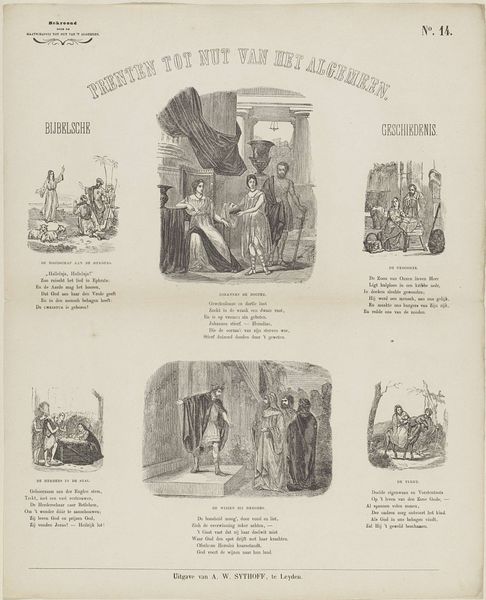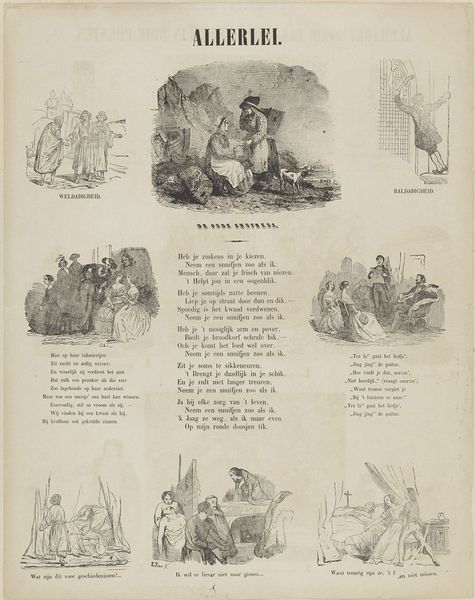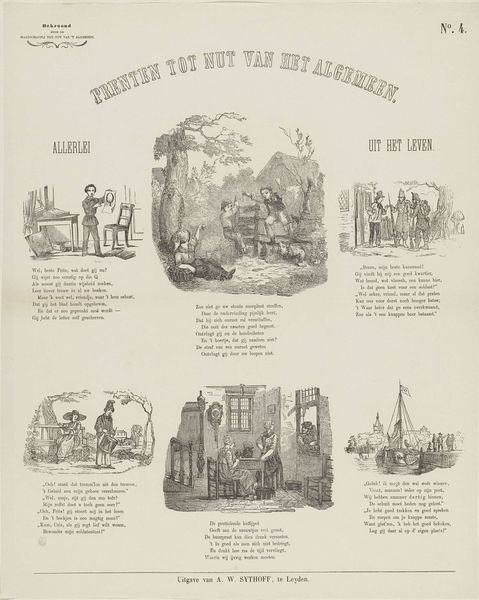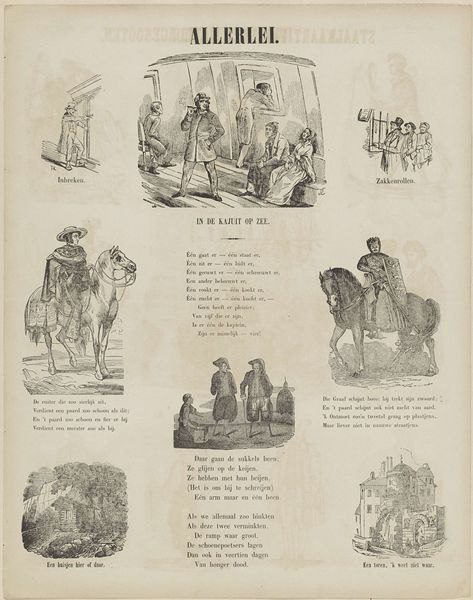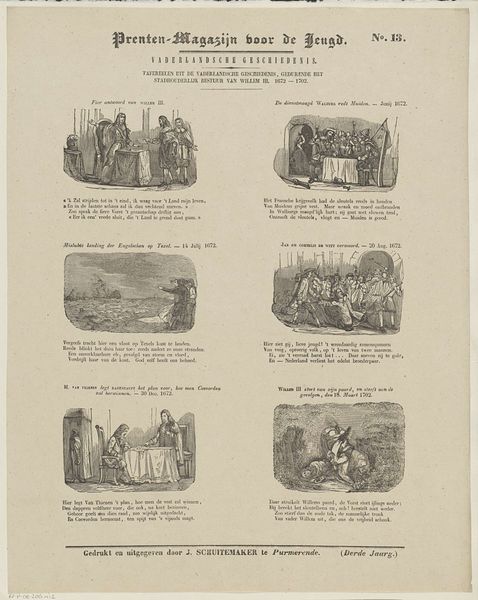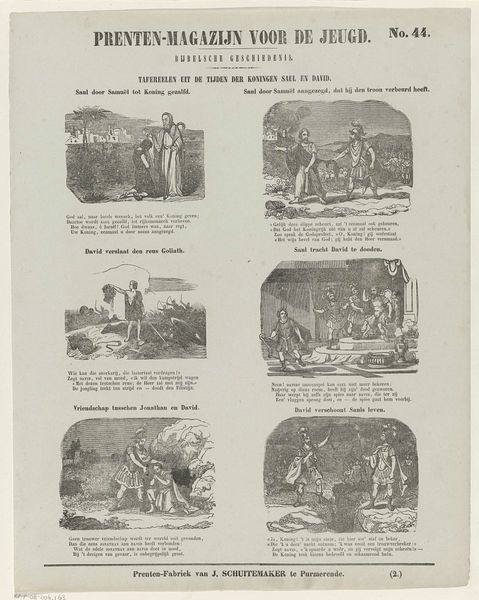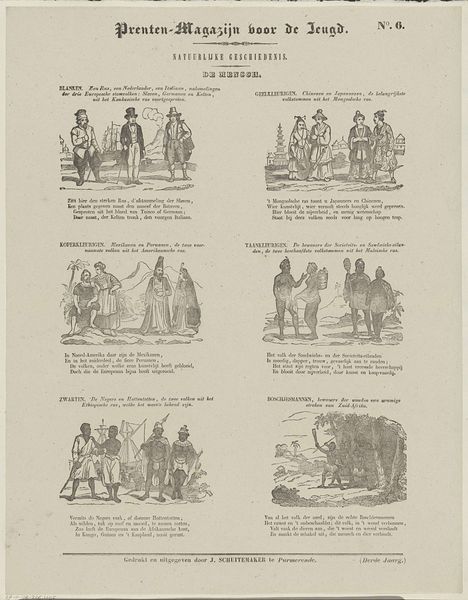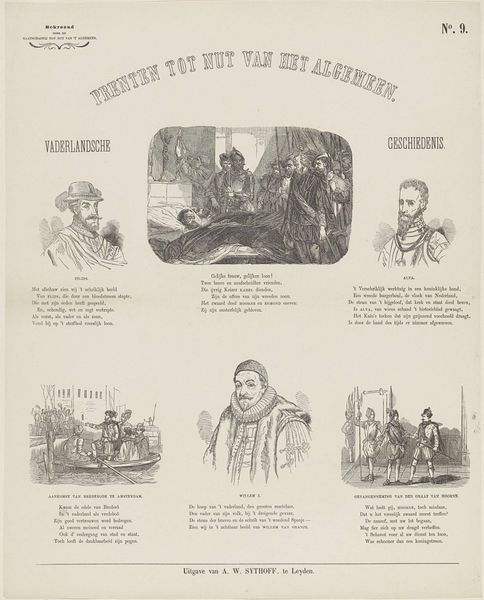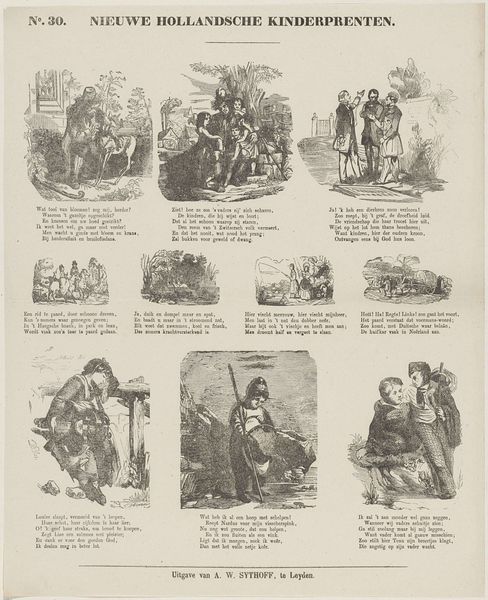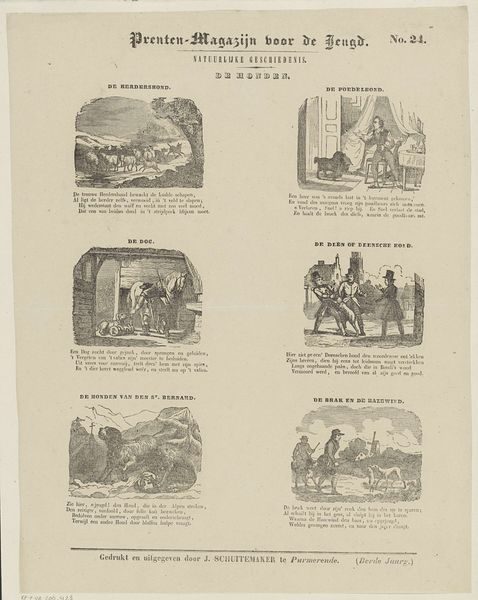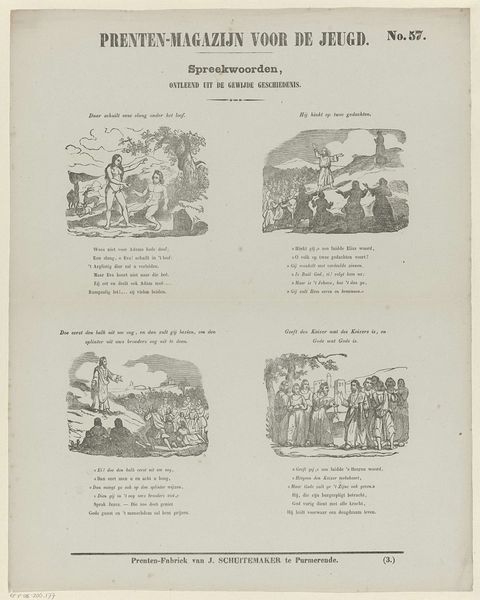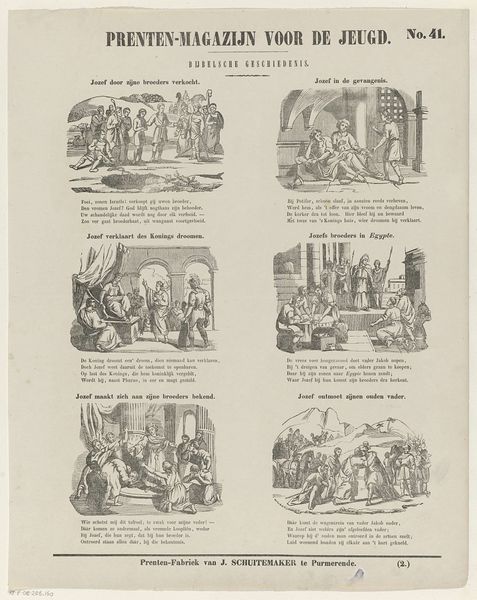
graphic-art, print, engraving
#
graphic-art
#
narrative-art
#
dutch-golden-age
# print
#
old engraving style
#
history-painting
#
engraving
Dimensions: height 422 mm, width 341 mm
Copyright: Rijks Museum: Open Domain
Curator: This engraving, titled “Bijbelsche Geschiedenis,” or “Biblical History,” created sometime between 1861 and 1929 by Albertus Willem Sijthoff, presents several scenes from the Old Testament. I’m immediately struck by how each panel, each narrative, is so meticulously rendered, even within the limited visual vocabulary of a print. Editor: It feels like a visual history lesson intended to be easily accessible, a commentary on biblical themes intended for mass distribution, possibly even for educational purposes given the texts below each visual vignette. How were images like these intended to shape public understanding of religious stories? Curator: Exactly! Prints like these circulated widely and aimed to impart moral lessons and solidify religious beliefs among a broad audience, using narratives like Cain and Abel or David and Abigail, we see established power dynamics depicted. It makes you wonder what biases, cultural interpretations, and sociopolitical messaging these accessible illustrations advanced and normalized. Editor: It makes one question if Sijthoff critically engaged with these dominant narratives or simply amplified established values through their circulation? Furthermore, where did Sijthoff stand amidst debates and discussions about faith that undoubtedly occurred at the time, how did Sijthoff view of history reflect how Sijthoff engaged in social settings. Curator: Considering the Dutch Golden Age aesthetic influences present in this print and Sijthoff's position as a publisher in Leiden, it’s quite possible that these biblical scenes served to subtly bolster a sense of national identity intertwined with Protestant values. Editor: Yet the universal themes embedded within those scenes provided opportunity for widespread acceptance beyond just localized issues. The engraving has effectively distilled some intricate episodes, while also creating layers to the history in each piece. I'm curious about the context through which audiences may have been exposed to this graphic art. Curator: Prints had that fascinating ability to enter everyday lives. So it acted as both art, social commentary, and education. Editor: Agreed, a piece like this bridges multiple levels of interpretation. It speaks to a specific religious moment, but reflects much greater, more powerful social structures in practice.
Comments
No comments
Be the first to comment and join the conversation on the ultimate creative platform.
